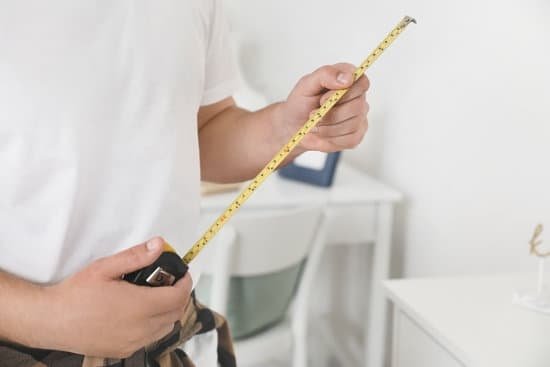Woodworking is a skill that has been practiced for centuries, resulting in the creation of beautiful and functional pieces of art. Whether it’s a finely crafted piece of furniture or a delicate wood carving, precision is crucial in achieving the desired outcome. In this article, we will explore the importance of accurate measurement in woodworking and how it affects the safety, aesthetics, functionality, and overall success of a project.
Why is it important to measure accurately in woodworking? Accurate measurements are essential in ensuring that a woodworking project turns out as intended. Whether it’s cutting pieces to fit together seamlessly or aligning joinery perfectly, precise measurements lay the foundation for a successful outcome. The ability to measure accurately is a fundamental skill that every woodworker must master in order to produce high-quality work.
Achieving precision in woodworking not only contributes to the safety of the woodworker but also plays a significant role in avoiding accidents and injuries. When pieces are cut to the wrong size or joinery is misaligned due to inaccurate measurements, it can compromise the structural integrity of the final product, posing potential hazards during use. Therefore, understanding the importance of accurate measurement is crucial for maintaining a safe working environment and preventing mishaps in woodworking projects.
The Importance of Precision
Accurate measurements are a crucial aspect of woodworking, as they determine the overall quality and functionality of the final product. Precision is key when it comes to creating pieces that are structurally sound, visually appealing, and safe to use. Whether you are a beginner or an experienced woodworker, understanding why accurate measurements matter is essential for achieving successful results in your projects.
Ensuring Structural Integrity
One of the primary reasons why it is important to measure accurately in woodworking is to ensure the structural integrity of your creations. Proper measurements are necessary for ensuring that the components of your project fit together seamlessly and securely. Whether you are constructing furniture, cabinetry, or other wooden items, precise measurements are essential for creating pieces that can withstand regular use without falling apart or becoming unstable.
Creating Visually Appealing Pieces
Accurate measurements also play a significant role in the aesthetics of your woodworking projects. When all components are precisely measured and cut, they fit together seamlessly, resulting in a polished and professional-looking final product. Additionally, precise measurements contribute to symmetrical designs and clean lines, enhancing the visual appeal of your creations.
Promoting Safety
Another reason why accurate measurements matter in woodworking is safety. Ill-fitted components due to inaccurate measurements can lead to accidents and injuries during construction or while using the finished piece. By taking precise measurements and ensuring that all pieces fit together correctly, woodworkers can reduce the risk of accidents and create products that are safe to use for themselves and others.
Safety First
Accurate and precise measurements are crucial in woodworking not only for achieving the desired outcome but also for safety reasons. When working with wood, inaccurate measurements can lead to accidents and injuries, which is why it is important to prioritize safety throughout the woodworking process.
Avoiding Accidents
Misaligned or improperly sized wood pieces can result in instability and structural weaknesses in the final product. This can pose a significant risk of collapse or breakage, especially for furniture items and other wooden constructions that are intended to bear weight. Additionally, inaccurate measurements when cutting wood can lead to splintering, which increases the risk of cuts and abrasions.
Preventing Injuries
One of the main reasons for measuring accurately in woodworking is to prevent injuries. An ill-fitting joint or an uneven surface could cause someone to trip, slip, or fall while handling the finished piece. Protruding screws or nails due to improper measurements can also cause accidental punctures and wounds during assembly or use. By ensuring precise measurements throughout the woodworking process, woodworkers can significantly reduce the risk of accidents and injuries.
Importance of Safety Protocols
Implementing safety protocols such as wearing appropriate protective gear, using tools properly, and maintaining a clean workspace is essential for accident prevention in woodworking projects. However, accuracy in measurement plays a fundamental role in mitigating hazards that may arise from structural flaws caused by imprecise dimensions. It is important for woodworkers to adhere to established safety guidelines while also taking care to measure with precision to create stable and secure wooden creations that prioritize safety above all else.
Aesthetics and Function
Accurate measurements in woodworking play a crucial role in ensuring the final product meets certain aesthetic and functional standards. The precision of each cut, joint, and angle directly impacts the overall appearance and usability of the piece being created. Whether it’s a finely crafted piece of furniture or a decorative wood carving, accuracy is essential for achieving the desired outcome.
Here are some reasons why it is important to measure accurately in woodworking:
- Aesthetics: Accurate measurements contribute to clean lines, tight joints, and overall symmetry in woodworking projects. This attention to detail enhances the visual appeal of the finished product, making it more attractive and professional-looking.
- Functionality: Proper measurements also ensure that all components fit together seamlessly and function as intended. Whether it’s a cabinet door that opens smoothly or a table with sturdy legs, precision in measurement directly impacts how well the item serves its purpose.
- Customer satisfaction: For those creating custom wood pieces for clients, accurate measurements are essential for meeting their expectations and delivering high-quality work. Satisfied customers are more likely to appreciate and recommend your craftsmanship.
By striving for accuracy in every step of the woodworking process, from measuring and cutting to assembling and finishing, woodworkers can consistently produce items that are both visually appealing and durable. This attention to detail ultimately results in products that stand the test of time and satisfy customers’ needs.
The Cost of Mistakes
Accurate measurements are crucial in woodworking for several reasons. One of the main reasons is that precise measurements ensure that all the pieces fit together properly, creating a stable and well-constructed final product. This is important not only for the structural integrity of the piece but also for safety reasons. If pieces do not fit together as intended due to inaccurate measurements, it can pose a serious safety risk when using the finished item.
In addition to safety concerns, accurate measurements also have a significant impact on the overall aesthetics and function of the final product. When components are not measured correctly, it can result in an uneven or misshapen appearance, affecting both the visual appeal and functionality of the woodwork. Whether it’s a table, chair, or cabinet, even small measurement discrepancies can greatly impact the overall quality of the finished piece.
Not only do inaccurate measurements affect the quality and safety of woodworking projects, they also come with a hefty cost. Mistakes in measurement often lead to wasted time and resources as materials may need to be replaced or re-cut. In addition to wasting time and money on materials, mistakes can lead to frustration and demotivation for woodworkers who take pride in their craft.
| Reason | Impact |
|---|---|
| Precision | Properly fitting pieces, stability, safety |
| Aesthetics & Function | Visual appeal and functionality affected by inaccurate measurements |
| Economic Cost | Wasted time & resources, frustration for woodworkers. |
Tools of the Trade
Accurate measurement is crucial in woodworking because it ensures that the final product meets the intended specifications and functions as expected. Using the right equipment for accurate measurements is essential for achieving precision in woodworking projects. Woodworkers rely on various tools to take precise measurements, including tape measures, rulers, calipers, squares, and levels.
One of the most commonly used tools for accurate measurement in woodworking is the tape measure. It allows woodworkers to take both long and short measurements with ease. A tape measure can also be used to check for squareness and ensure that components are cut to the correct length. For more precise measurements, woodworkers may turn to calipers, which allow them to measure thickness, inside dimensions, and outside dimensions accurately.
In addition to handheld tools, woodworkers use more advanced equipment such as laser measuring devices and digital angle finders to achieve a high level of accuracy in their projects. These modern tools offer increased precision and efficiency, leading to better-finished products. By employing the right equipment for accurate measurements, woodworkers can mitigate the risk of errors and produce high-quality work that meets professional standards.
| Woodworking Tools | Function |
|---|---|
| Tape Measure | All-purpose tool for taking various measurements |
| Calipers | Precision measuring tool for thickness and dimensions |
| Laser Measuring Device | Advanced tool for accurate distance and dimension measurements |
| Digital Angle Finder | Precision tool for measuring angles in woodworking projects |
Tips and Techniques for Achieving Precision in Woodworking
Accurate measurement is crucial in woodworking, as it ensures that the final product is of high quality, safe to use, and aesthetically pleasing. Whether you are building a small piece of furniture or working on a large-scale construction project, precision in woodworking can make all the difference. Here are some tips and techniques for achieving accurate measurements in woodworking:
1. Use the right tools: Investing in high-quality measuring tools such as tape measures, rulers, squares, and calipers is essential for achieving precise measurements. These tools should be properly calibrated and well-maintained to ensure accuracy.
2. Marking techniques: When marking your measurements on wood, use a sharp pencil or fine-point marker to create clear and precise lines. Double-check your measurements before making any cuts or drilling any holes to avoid errors.
3. Checking for square: Ensuring that your workpieces are perfectly square is important for achieving accuracy in your woodworking projects. Use a carpenter’s square or a combination square to check for squareness regularly throughout the construction process.
4. Taking your time: Rushing through measurements can lead to costly mistakes in woodworking. Take your time to measure accurately and double-check your work before proceeding with any cutting or assembly.
5. Using jigs and fixtures: Creating custom jigs and fixtures can help you achieve accurate and repeatable measurements in your woodworking projects. These tools can assist with tasks such as routing dadoes, cutting angles, and drilling precise holes.
By following these tips and techniques for achieving precision in woodworking, you can ensure that your projects are of the highest quality and free from errors that may compromise safety or aesthetics.
Learning how to measure accurately will make all of the difference when it comes to making detailed cuts or working with intricate joinery methods such as dovetails or mortise-and-tenon joints. Knowing how to measure accurately won’t just help prevent mistakes-it will also enable woodworkers to create beautiful pieces that they’ll be proud of for years to come.
The Satisfaction of Excellence
Accurate measurement is crucial in woodworking, as it directly impacts the final product’s quality and craftsmanship. When a woodworker takes pride in creating well-made creations, precision becomes an essential aspect of their work. By measuring accurately, woodworkers can ensure that each component of their project fits together seamlessly, resulting in a finished product that not only looks beautiful but also functions as intended.
One reason why it is important to measure accurately in woodworking is the satisfaction of excellence that comes with creating high-quality pieces. Whether it’s a handcrafted piece of furniture or a decorative item, achieving precise measurements reflects the woodworker’s dedication to their craft. This dedication is evident in the final product and contributes to the overall satisfaction and pride experienced by the woodworker upon completion.
Furthermore, accurate measurements contribute to the longevity and durability of woodworking projects. A well-measured piece is less likely to experience structural issues over time, ensuring that it remains functional and aesthetically pleasing for years to come. This emphasis on precision not only reflects the woodworker’s commitment to their work but also ensures that their creations stand the test of time, providing value for both the creator and the end user.
Conclusion
In conclusion, it is evident that accurate measurement plays a crucial role in woodworking for a variety of reasons. From ensuring safety and avoiding accidents to creating aesthetically pleasing and functional pieces, precision in measurements is essential for any woodworker. The impact of accuracy on the final product cannot be overstated, as it directly affects the quality and success of the project.
One of the most important reasons why accurate measurement is vital in woodworking is safety. Woodworking involves the use of sharp tools and heavy machinery, so even a small error in measurement can lead to accidents and injuries. By taking the time to measure accurately, woodworkers can minimize the risk of mishaps in the workshop and create a safer environment for themselves and others.
Furthermore, achieving precision in woodworking not only saves time and money but also prevents wastage of materials. When inaccurate measurements result in mistakes, it can lead to costly rework or replacement of materials. This not only impacts a woodworker’s budget but also contributes to environmental waste.
Therefore, using the right tools and techniques for accurate measurements is key to efficient and sustainable woodworking practices. In essence, accuracy in measurement should always be prioritized by woodworkers to ensure their safety, save costs, and yield high-quality results.
Frequently Asked Questions
Why Is It Important to Use Accurate Measurements?
It is important to use accurate measurements because it ensures that the final product or construction meets specifications and standards. In fields like construction, engineering, and manufacturing, accuracy in measurements is crucial to avoid errors, rework, or safety hazards. Accurate measurements also help in minimizing waste of materials and resources.
Why Is Measuring Wood Important?
Measuring wood is important in various woodworking projects to ensure that the pieces fit together properly and meet the required dimensions. Whether building furniture, framing a house, or constructing cabinets, precise measurements of wood are essential for the structural integrity and aesthetic appeal of the finished product.
Why Is It Important That a Carpenter Should Know How to Measure Materials Accurately?
A carpenter should know how to measure materials accurately because it directly impacts the quality and success of their work. Whether cutting wood for a specific project or determining dimensions for installation, accurate measurements are critical for ensuring that everything fits together seamlessly. Without proper measurements, a carpenter risks producing flawed products that can compromise safety and functionality.

Hi everyone! I’m a woodworker and blogger, and this is my woodworking blog. In my blog, I share tips and tricks for woodworkers of all skill levels, as well as project ideas that you can try yourself.





